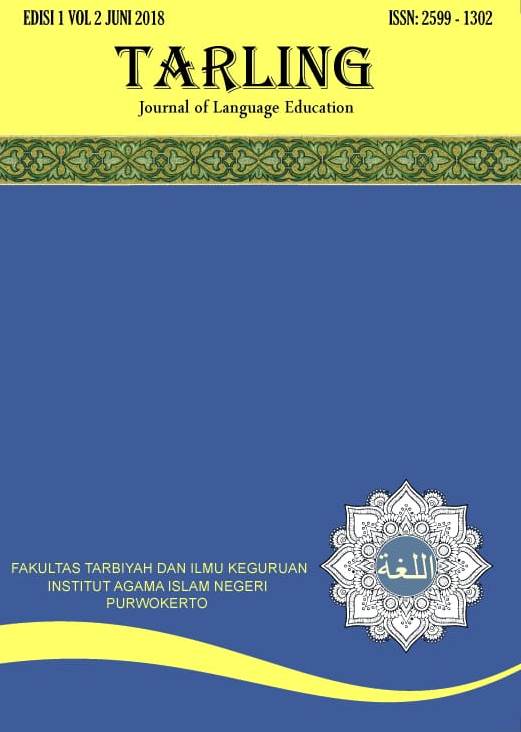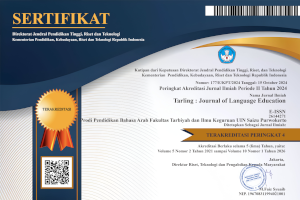PROPHETIC LEARNING IN ELT
Pembelajaran Ala Nabi dalam Pengajaran Bahasa Inggris
DOI:
https://doi.org/10.24090/tarling.v1i2.1786Keywords:
pembelajaran ala Nabi; kebudayaan; integrasi; bahasa InggrisAbstract
Affective teaching is substantive in the process of learning. It aims at developing excellent moral output. For Muslims, the Prophet Muhammad becomes the trendsetter in all aspects of their life. By examining some hadiths, the Prophet Muhammad did not only provide a form of that was only cognitive or afective, but in several conditions the prophet also gave an example of how to learn and teach. Therefore prophetic learning is necessarily integrated into all instructional contents so students can fully develop their attitude accordingly. English is a necessary subject, but on the other hand, it also teaches the idea of secularity which exist in English culture. Integrating prophetic learning in English language teaching can be done through: (1) teacher as a model; (2) stimulus response/questioning; (3) story telling; (4) analogy/logical order; (5) direct practice; (6) applied materials; (7) giving advice; (8) closing statement.
Downloads
Published
2018-10-12
Issue
Section
Articles
License
Authors who publish with this journal agree to the following terms:
- Authors retain copyright and grant the journal right of first publication with the work simultaneously licensed under a Creative Commons Attribution License that allows others to share the work with an acknowledgement of the work's authorship and initial publication in this journal.
- Authors are able to enter into separate, additional contractual arrangements for the non-exclusive distribution of the journal's published version of the work (e.g., post it to an institutional repository or publish it in a book), with an acknowledgement of its initial publication in this journal.
- Authors are permitted and encouraged to post their work online (e.g., in institutional repositories or on their website) prior to and during the submission process, as it can lead to productive exchanges, as well as earlier and greater citation of published work (See The Effect of Open Access).









